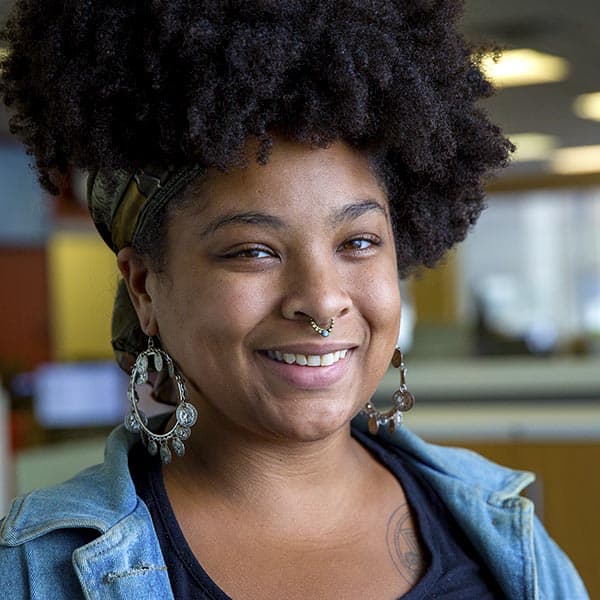Advertisement
From The Archives
How LGBTQ+ Youth Gained Protection In Massachusetts
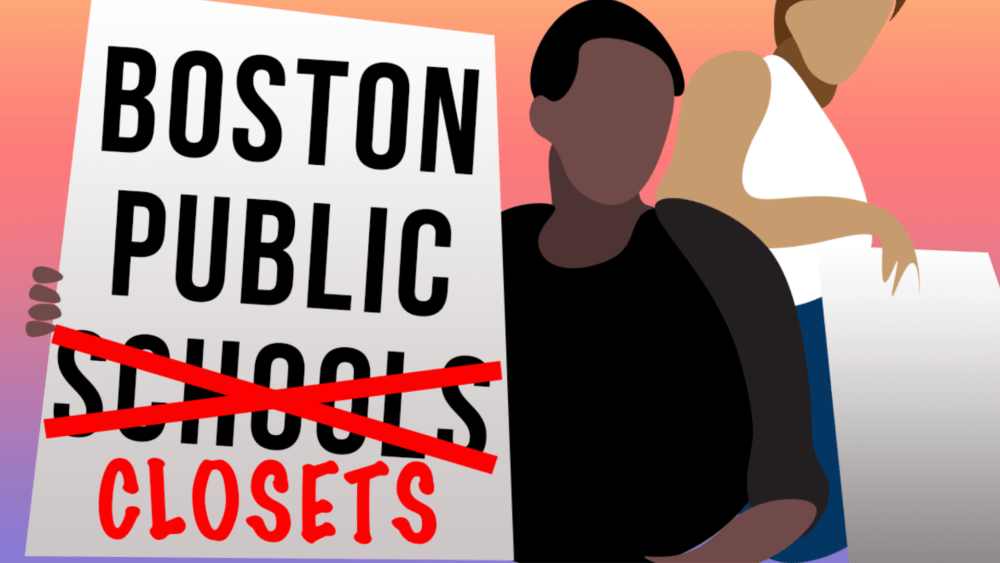
Each week this month, The ARTery will highlight a story from the archives of Greater Boston's LGBTQ history. We're partnering with The History Project, which preserves these stories.
In 1983, Boston Public School youth joined the Boston Pride Parade. A photo captured two youths holding signs addressing the lack of support for LGBTQ+ students in schools in Massachusetts. It would be another nine years before the state created the Governor's Commission on Gay and Lesbian Youth to respond to the high suicide risk of LGBTQ+ youth in schools.
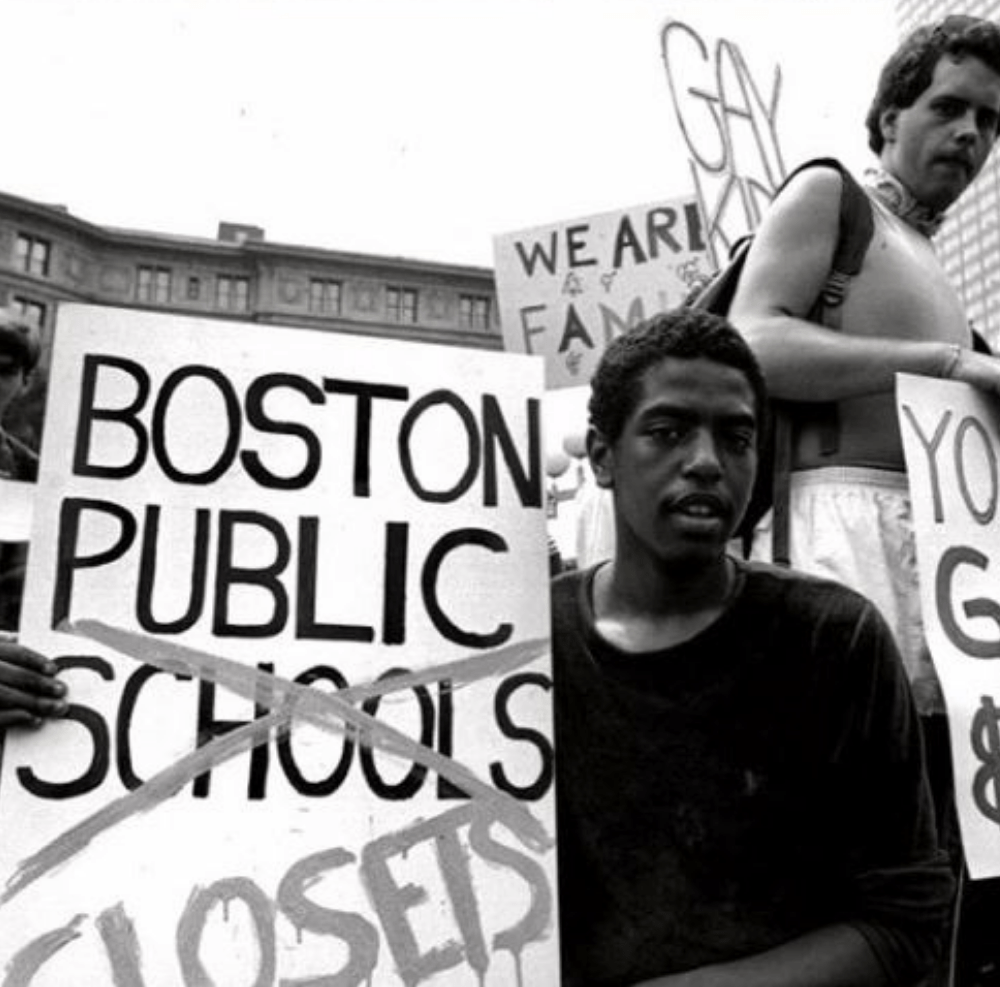
The commission was established in 1992 by Gov. William Weld and it was created to address the needs of LGBTQ+ youth. According to an education report released by the commission in 1993, a survey of 2,074 LGBTQ+ youth found that 45% of males and 20% of females experienced verbal or physical assault in high school because of their sexuality.
“Massachusetts enacted the Hate Crimes Reporting Act in 1990... However, the protection afforded adults by this law has yet to be extended to our schools,” the report reads. At the time of the creation of the commission, Cambridge Rindge and Latin was the only public high school in Massachusetts with a program to support LGBTQ+ youth.
The commission was the first of its kind in the United States and it inspired other similar commissions in New York, California and Illinois.
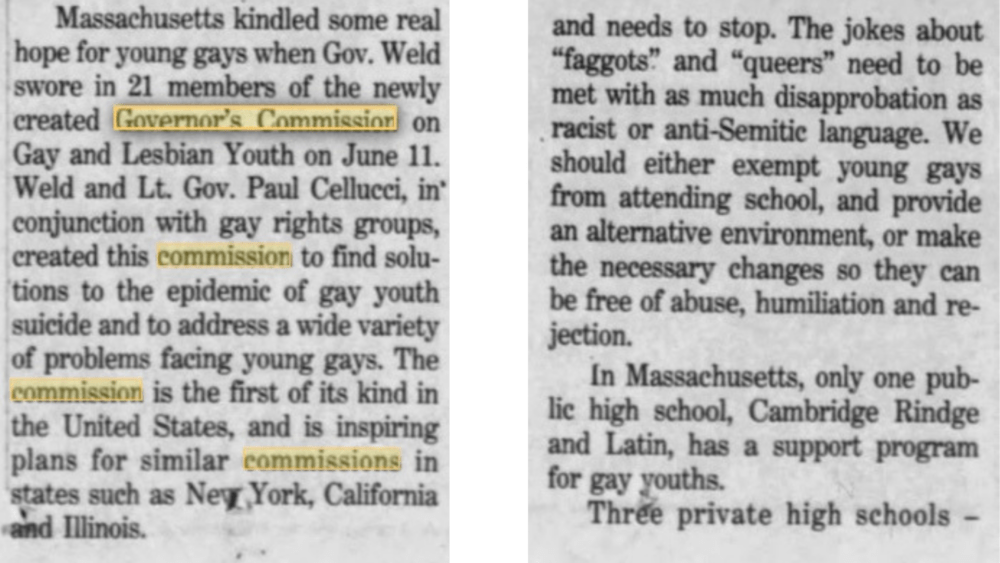
In November 1992, the third of five public hearings scheduled by the commission occurred. LGBTQ+ youth were invited and encouraged to speak about their experiences in school at these hearings. The chairman of the commission, David LaFontaine, told The Boston Globe that the hearings helped put a “human face on the suffering of gay and lesbian youths.”

After its creation, the commission provided resources for LGBTQ+ youth, enacted programs that created safe spaces in schools and consulted with legislation on creating policy that protected them. The commission also supported the annual Youth Pride Parade of Boston.
In 2003, the commission ran into roadblocks when Mitt Romney became governor of Massachusetts. Romney had expressed somewhat promising support for the LGBTQ+ community in his 1994 letter to the pro-gay Republican group, The Log Cabin Republican, seeking their endorsement in his bid for president. "As a result of our discussions and other interactions with gay and lesbian voters across the state, I am more convinced than ever before that as we seek to establish full equality for America's gay and lesbian citizens, I will provide more effective leadership than my opponent," he wrote.
However, things got hairy in 2006 when an unofficial news release about the annual Youth Pride Parade, sent out by the commission, included the words “bisexual” and “transgender.” It went out on official state stationary that included Romney’s name and Lt. Gov. Kerry Healey's name. Romney’s office was not pleased. "They were outraged that we use the word 'transgender' in our press release," commission chairwoman Kathleen Henry said in an 2006 interview with The Boston Globe.
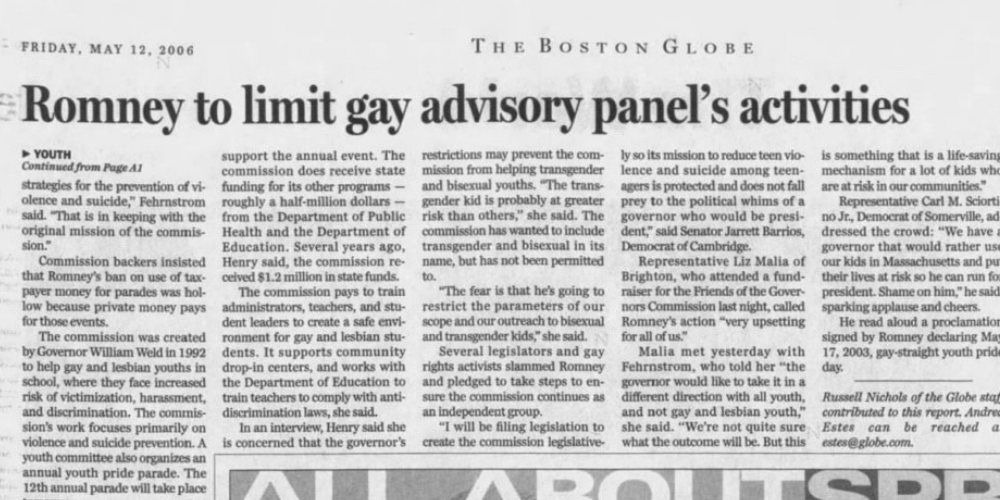
At first, it seemed as though Romney would disband the commission altogether. Henry said she was called by Beth Myers, the governor's chief of staff, who told her that the governor planned to issue an executive order "revoking our existence" with the intent of creating another youth commission focused on all state youth, not just LGBTQ+ youth.
After consideration, Romney changed his mind and, instead, sought to limit some of the commission’s activities, which still greatly worried LGBTQ+ activists and supporters. "I will be filing legislation to create the commission legislatively so its mission to reduce teen violence and suicide among teenagers is protected and does not fall prey to the political whims of a governor who would be president," said Democrat Sen. Jarrett Barrios in an interview with the Globe.
State legislature stepped in to remove Romney’s control of the commission, which would consequently make the commission independent. Romney vetoed the decision but all Republicans and Democrats, save for Sen. Scott Brown, voted to make the commission independent.
In 2006, the Governor’s Commission transformed into an independent state agency established by law and today is known as the Commission on Lesbian, Gay, Bisexual, Transgender, Queer, and Questioning (LGBTQ) Youth. The commission continues on with its programming, both within and outside of schools.
